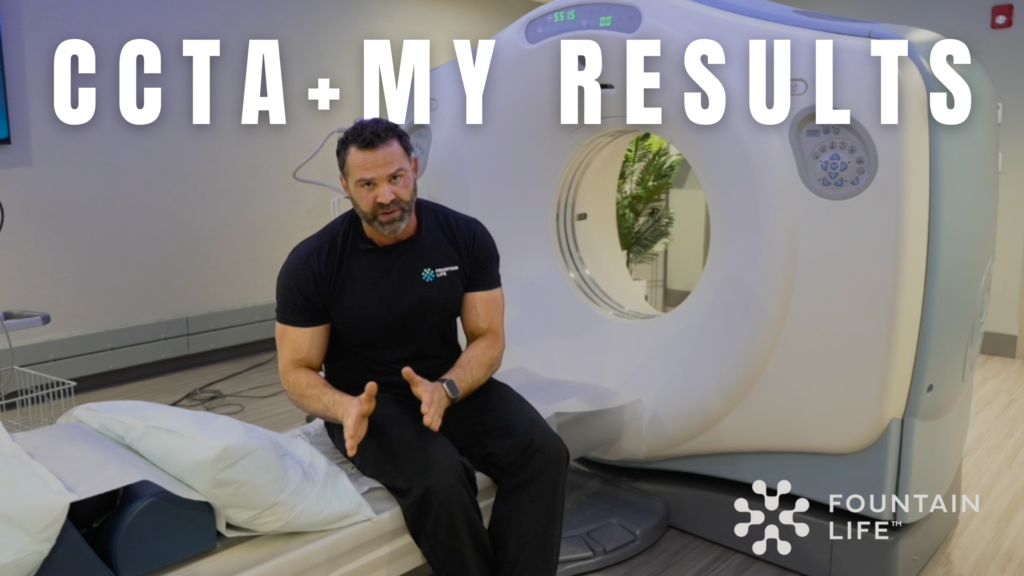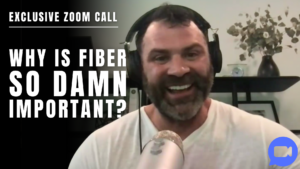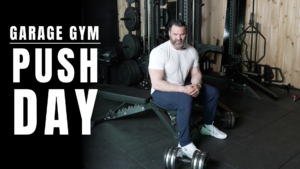Today, I’m diving into one of the most important scans I’ve ever done — the Coronary Computed Tomography Angiography (CCTA) — at Fountain Life. This scan is what originally drew me to the clinic. It’s a powerful tool that provides a detailed 3D image of the heart, not only assessing size and structure but also checking for any plaque buildup in the coronary arteries — both calcified and non-calcified.
Why I Chose the CCTA Scan
I’m in my 30s, on testosterone replacement therapy (TRT), and I take very good care of my health. But I also lead a business, support a family, and employ a team — I have responsibilities. That’s why I wanted to go beyond just a routine checkup. I previously had a coronary calcium scan, which only detects calcified plaque, but I wanted a deeper look — one that showed the full picture of heart health.
The CCTA scan provides that. It helps detect plaque that hasn’t calcified yet — the kind that might still rupture and lead to heart disease if left unchecked.
It’s Not Just About the Heart
While I was at Fountain Life, I also underwent two other key tests:
- Low-Dose CT Lung Scan – Helps detect lung nodules and assess early signs of cancer.
- Echocardiogram – Measures the size and structure of the heart, looking for any thickening, especially in the ventricles.
These tests can uncover issues before symptoms appear, which is the whole point of executive-level preventative health care.
Don’t Be Afraid of the Data
I talk to so many people who avoid tests and doctor visits because they’re afraid of what they’ll find. That mindset can be dangerous. Early detection is everything. If you catch something early, chances are, you can treat it. If you wait — that’s when things go bad.
The goal isn’t to scare yourself. It’s to empower yourself with information so you can stay ahead of the curve.
What the Experience Was Like
Getting the CCTA was surprisingly smooth. The only odd part was the contrast dye injection, which caused a warm sensation (including, yes, a tingling in the groin — just being real here). But the experience was white-glove all the way, and I should have full results back within a week.
My CCTA Results: The Breakdown
I’ve had a zero calcium score in the past — fantastic — but I still wanted to dig deeper. Here’s what I found:
- Total Plaque: 121 — in the healthy range.
- Calcified Plaque: 3.6 — up slightly from 0, but still very low.
- Non-Calcified (Soft) Plaque: 117.7 — also healthy and mild.
- Low-Density (Vulnerable) Plaque: 0.4 — very, very low risk.
This test gave me a clearer picture of my heart health than any other scan ever has. The platform I used, Clearly, provided an easy-to-understand PDF summarizing my results — which I love. Education and simplicity go a long way in helping people take action on their health.
Lung Scan Results
I’ve had two small lung nodules for years, and they’re still present — unchanged and less than 1% chance of being cancerous. I’m not worried, but I am going to see a pulmonary specialist for extra peace of mind.
Most people wouldn’t even know they had these nodules because they wouldn’t have had a scan. Awareness is everything — I’m not stressed, just informed and proactive.
Echo Results
For someone on TRT and lifting for years, left ventricle thickening is a concern. Thankfully, my echocardiogram showed no thickening and a heart size within perfect range. Couldn’t ask for better news.
What I Recommend for You
If a full executive health scan isn’t in your budget yet, start with:
- Annual lab work (especially lipid panels like LDL and VLDL).
- Coronary Calcium Scan – around $150–200, can be life-saving.
If you’re in your 30s, 40s, or 50s — regardless of what your blood work says — go get it done. Heart disease remains the #1 killer, and half of people who have heart attacks never have prior symptoms.
Final Thoughts
I grew up in a small town with very little. My dad was an alcoholic. My mom had me at 16. To now be in a position where I can not only take charge of my health but share that journey with you, is something I’m incredibly grateful for.
Thanks for following along. If you enjoyed this post, I have several more in this Executive Health Series — including scans, MRIs, DEXA, and blood work breakdowns. You can follow me on YouTube for long-form content, and check out Instagram or TikTok for daily shorts.
Until next time — stay proactive, stay informed, and take care of yourself.



